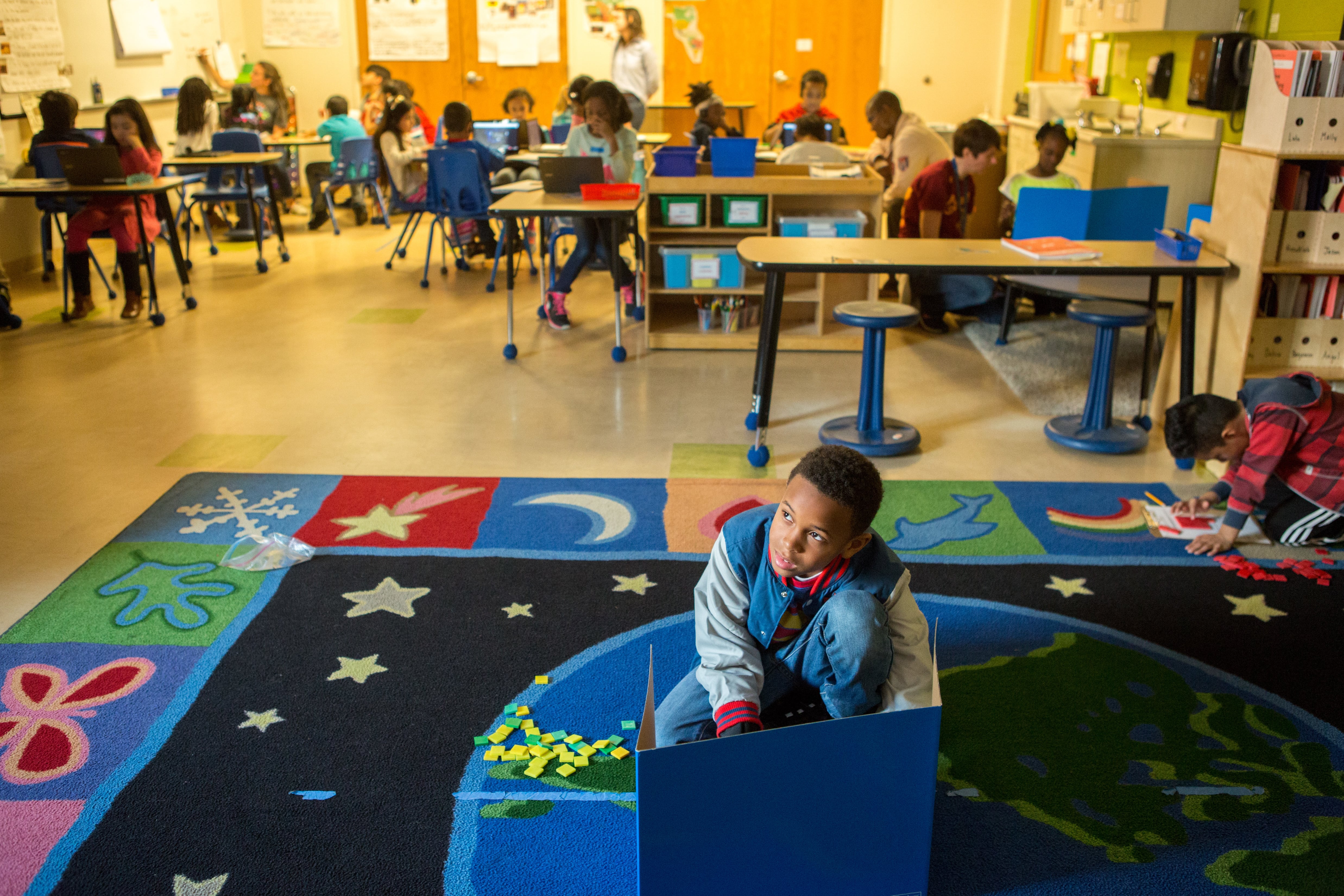Sign up for Chalkbeat’s free weekly newsletter to keep up with how education is changing across the U.S.
U.S. fourth graders saw their math scores drop steeply between 2019 and 2023 on a key international test even as more than a dozen other countries saw their scores improve. Scores dropped even more steeply for American eighth graders, a grade where only three countries saw increases.
The declines in fourth grade mathematics in the U.S. were among the largest in the participating countries, though American students are still in the middle of the pack internationally. The extent of the decline seems to be driven by the lowest performing students losing more ground, a worrying trend that predates the pandemic.
The results released Wednesday from the Trends in International Mathematics and Science Study, or TIMSS, assessment come from more than 650,000 fourth and eighth graders in 64 countries who took the tests in 2023. The test has been administered every four years since 1995. The results are used to monitor how many students have foundational math and science skills.
Singapore, South Korea, Hong Kong, and Japan topped the rankings in most grades and subjects.
Among participating countries, the large majority of students met at least the low benchmark, which means students have basic math skills and know basic science facts. Roughly a third of students met the high benchmark, which means students can apply concepts in a variety of situations.
The 2023 tests saw a growing gender gap in favor of boys across many countries, especially in fourth grade math. Gender gaps that were prominent when TIMSS was first administered in 1995 had narrowed over time, but seem to have returned.
“The gender gap is a matter of concern,” said Dirk Hastedt, executive director of IEA, the agency that administers TIMSS. “It’s clearly something that needs to be considered and monitored very, very carefully.”
These are the first TIMSS results since the COVID response disrupted education around the world. TIMSS is the first international test to show improvements in some countries since the pandemic, with countries in Eastern Europe and the Middle East in particular showing gains.
School closures looked very different in different countries, with some emphasizing in-person learning for younger students and others giving preference to older students and a wide range of hybrid schooling practices. Test administrators said they didn’t collect enough information to tie those practices to test results, and more research is needed.
A number of countries that once scored below the U.S. on the TIMSS in math are now ahead. American students’ ranking in science is better, but average scores for fourth graders are now below 1995 scores.
In contrast, on the Program for International Student Assessment or PISA, another key international test given to eighth graders in 2022, U.S. math scores also fell steeply, but the U.S. ranking improved because other countries saw greater declines. On the PISA, U.S. reading and science scores held steady.
The TIMSS results echoed the 2022 findings of the National Assessment of Educational Progress or NAEP, which saw major declines in math scores among both fourth and eighth graders. American students’ scores actually started to decline before the pandemic for reasons that are not entirely clear.
Peggy Carr, commissioner of the National Center for Education Statistics, said the NAEP results two years ago were “devastating,” and the TIMSS results are “just as devastating.”
“I would call these declines sharp, steep declines,” she said.
While many other countries are also struggling, she said, declines were not inevitable, given that some countries saw their scores go up in some grades and subjects.
“We have countries leapfrogging over us,” Carr said.
Scores for the highest performing American fourth graders were about the same as in 2019, but the lowest performing students — those in the bottom 10% — saw their scores drop by 37 points in math and by 22 points in science compared with similar students in 2019. The lowest performing eighth graders saw their scores drop by 19 points in math. One in five U.S. eighth graders scored below the low benchmark, meaning they lacked even basic proficiency.
The steep decline among students who struggle the most in school drove much of the decrease in U.S. test scores, Carr said.
This gap between high- and low-performing students started to widen before the pandemic for reasons that are unclear. Since then, other research into post-pandemic academic performance has found widening gaps across race and income, even as many middle and higher income students are doing well.
The TIMSS assessment includes questions about student absences from school, the resources they have at home, quality of instruction, including how often students get to conduct science experiments, and whether students like math and science.
The surveys found that on average one in 10 students worldwide misses school at least once a week and one in five miss school at least once every two weeks. Absenteeism was even higher in some countries. Across subjects and grades, students who rarely missed school scored the highest and students who missed school often scored the lowest.
“We have a good percentage of students who seem to be disengaged in school at this early age,” Hastedt said. “That’s clearly a very disturbing finding and something that asks for policy reactions.”
There was also a strong correlation between socioeconomic status and test scores. Students from higher income households and those who attended schools with more affluent students had higher scores.
Schools where principals reported fewer discipline problems and more emphasis on academic success had higher average test scores.
Students who reported that they liked math and science did better on average than those who didn’t, but the relationship was not nearly as strong as that for socioeconomic status.
Senior reporter Kalyn Belsha contributed.
Erica Meltzer is Chalkbeat’s national editor based in Colorado. Contact Erica at emeltzer@chalkbeat.org.







